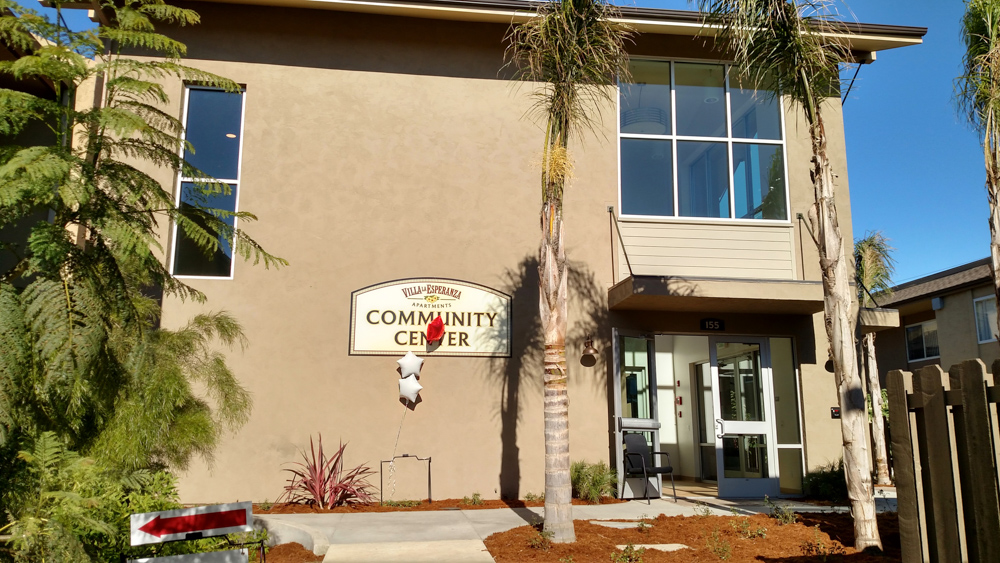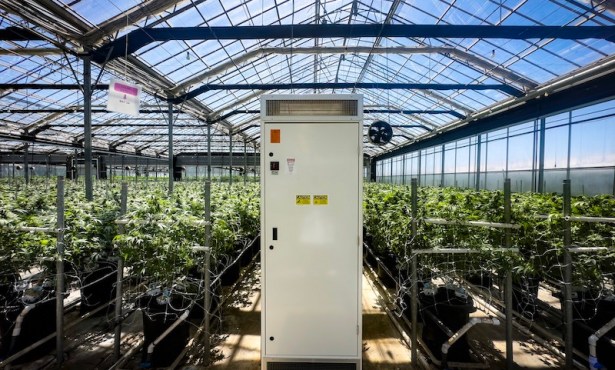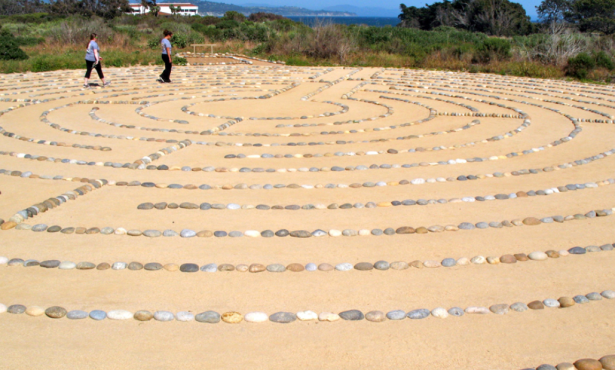Low-Income Housing Expands in Goleta

Another 16 units of low-income housing were officially celebrated Tuesday, on a glowing morning matched by the good vibe of a deed done well. The new units were created after dividing several five-bedroom apartments at Villa la Esperanza, an existing complex on South Kellogg Avenue in Goleta originally financed by contributions from area churches and built by Michael Towbes in 1971 to house homeless people. Over the past three years, People’s Self-Help Housing and myriad partners have been rebuilding to create 83 rehabilitated apartments. The rents on the units, already completely full, allow the tenants to pay the recommended 30 percent of income on housing.
Many of the residents are English-language learners, as well as being on the low-income side of the economic scale, said Gillian Cole Andrews, a spokesperson for People’s Self-Help Housing. The property’s Frank Renda Community Room — named for a longtime project proponent with the Goleta Valley Housing Committee — was rebuilt as a 5,000-square-foot, two-story social center that houses meeting rooms and a tutoring area for students, with computers that are also available to their parents. Andrews explained one of the learning center goals is to ensure that all are working at their grade level. “The critical point for math is the 5th grade,” she said. “If you’re not at grade level then, that’s when you start to see detrimental impacts. For literacy, it’s the 3rd grade.”
People’s Self-Help Housing has similar centers at 12 of its housing developments, working with the school districts to achieve results, which Andrews listed with pride. “The high school graduation rate is pretty much 100 percent over the past 13 years. Our very first student who entered the program back then is at university, and all of them are in four-year programs. Two are in their master’s programs,” she added. “One is at Columbia.”
Villa la Esperanza was originally built with a “huge donation from local churches who wanted to address homelessness in Goleta,” said John Fowler, who heads up People’s Self-Help Housing, which currently operates in Santa Barbara, San Luis Obispo, and Ventura counties. “They worked collectively 40 years ago and brought in a local developer they knew and trusted,” he said. “They educated themselves on affordable housing and built and maintained Esperanza all these years.” The housing was given to People’s Self-Help to manage, “and it turned out to be a $22 million gift,” Fowler said. The rehabilitation cost about $20 million — funded through the Goleta Valley Housing Committee, Citi Community Capital, Merritt Community Capital Corporation, and U.S. Housing and Urban Development — but People’s has been able to take the enhanced value of the property and use it to help finance other projects, about 250 units’ worth, Fowler estimated. For Villa la Esperanza, the rehab included installing energy-efficient fixtures that save 10 percent across the property, as well as full accessibility in the new ground-floor apartments.
The churches initially involved — Christ Lutheran Church, Goleta Presbyterian Church, Cambridge Drive Community Church (then known as First Baptist of Goleta), Catholic Charities, and University United Methodist — were joined by the Goleta Neighborhood Association in working out the logistics for the building over the years. A retired physicist with S.B. Research, Renda had served on the Neighborhood Association board for more than 30 years, advocating for a quality of life for those who lived at Villa la Esperanza, through learning and the ability to hold celebrations in a larger community space.
The original goal of housing the homeless now provides homes for people with incomes near 60 percent of Goleta’s Area Median Income. Rent costs vary on a sliding scale in relation to a tenant’s income. “If you spend more than 30 percent for housing,” Gillian Cole Andrews explained of the government advisory, “you are compromising the other areas of your life. You’re not able to pay for a doctor’s visit or pay for your kid to be on a sports team.”
During the three-year re-construction project, as the work rotated through the dwellings, tenants who could afford it found alternate housing, while about 57 relocated temporarily and then moved back in, Fowler explained. A lottery was held among the income-qualified for the remaining spots, Andrews said. “And if they fit all the requirements, we were able to joyfully send them an invitation to come live here.”



